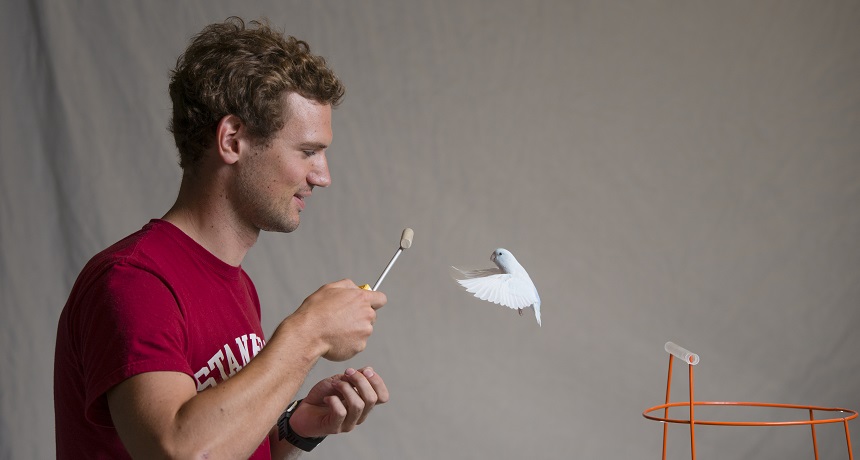How birds stay in the air

Uncrewed aerial vehicles (UAVs) are set to form a growing multi-billion dollar industry in the skies in the coming years, with rising potential for a wide range of uses from emergency assistance to drug delivery, home deliveries and precision agriculture. In line with this, efforts are under way to bolster flight efficiency and the intelligence of UAVs to better navigate built environments. A variety of research groups are drawing their inspiration from nature, often birds – an original inspiration for human flight.
The force a bird exerts to keep itself aloft has always been a bit of a mystery. Many researchers have tried to calculate the forces involved in bird flight. Some used lasers, for instance, to measure the flow of air over a bird flying in the lab. Then the experts put those data into a complex mathematical expression — what’s known as an equation — to calculate the wings’ force. But here’s the problem: When animals — including birds — move, their whole body changes shape. This causes air to flow over it in turbulent patterns. And that makes calculations less reliable. Not only that, lasers can damage a bird’s eyes.
Now, a team of researchers from Stanford University in California has figured out what to do. Leading the effort is David Lentink. This aerospace engineer designed a special box equipped with force sensors.
The box is about the size of a large bird cage. It has two perches and a clear acrylic front. This lets scientists watch as a bird flies from perch to perch. The box’s floor contains the spring-loaded sensors. The springs work like those in a bathroom scale. The greater the downward force, the more the springs squeeze together. But Lentink’s sensors don’t measure the weight of the bird. Instead, they measure the force generated each time a bird’s flapping wings push on the air inside the box. That air pushes on the box’s floor, transferring the force. The sensors attached to the box’s floor are super sensitive. They even register air as it circulates inside the lab. So to avoid introducing errors, “We had to turn off the air conditioner during the experiment,” Lentink notes.
The team conducted its tests with two Pacific parrotlets: Ray and Gaga. The small white and light-blue parrots were trained to fly from perch to perch. (Each time they did it, the birds were rewarded with a seed.) On each downstroke, the birds used double the force needed to counteract gravity and lift their weight, the sensors showed. On each upstroke, the bird exerted virtually no force. That means the upstroke wasn’t counteracting gravity at all. Together, the two wing beats cancelled each other out. This allowed each bird to counteract gravity just enough to keep it aloft.
Lentink is especially pleased to have designed an experiment that does not harm the birds. He now is eager to put his research in motion: “I design flying robots in my lab and I want to improve them,” he says. Jim Usherwood is an expert in figuring out how animals move on land and in the air. He works at The Royal Veterinary College in London, England. Lentink’s experiment makes good sense, he says. But Usherwood cautions that the new findings won’t apply to all birds.
“Some birds — think of cruising seagulls — act much more like airplanes,” he says. “Their wings are outstretched and support weight even when in upstroke. And some birds produce lift with their wings upside-down during the upstroke when flying really slowly. Hummingbirds do this.”
Lentink agrees that his new findings don’t hold for all birds. In fact, he has now gone on to produce research about how different species of bird take off and land, perform manoeuvres, and hover. He is utilising this research to inspire student teams to develop a wide range of flying vehicles, including a micro air vehicle that can morph its wings like a bird using artificial feathers (Figure 1).
 Figure 1: Top view of morphing from sweptback to unswept morphing position.
Figure 1: Top view of morphing from sweptback to unswept morphing position.
.png)